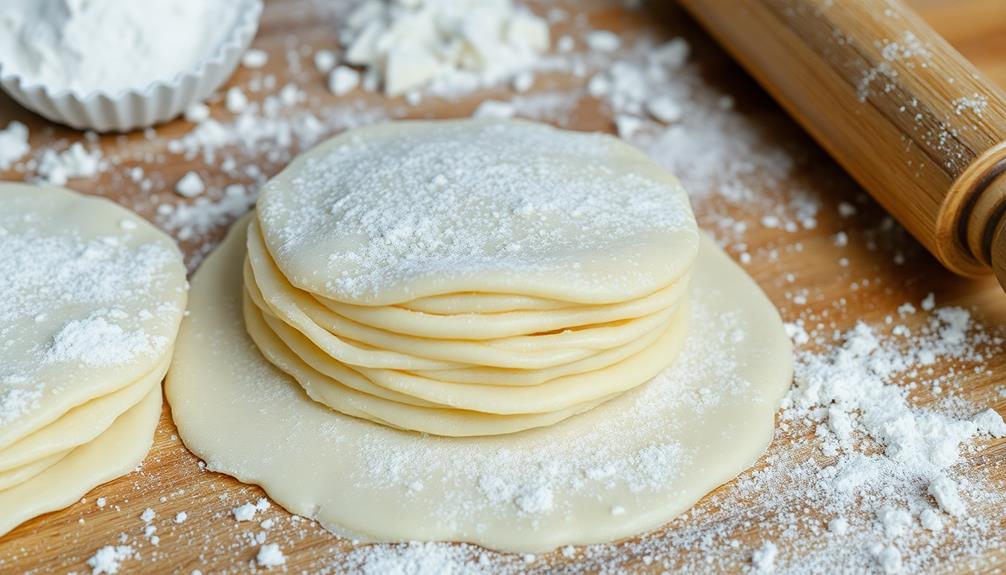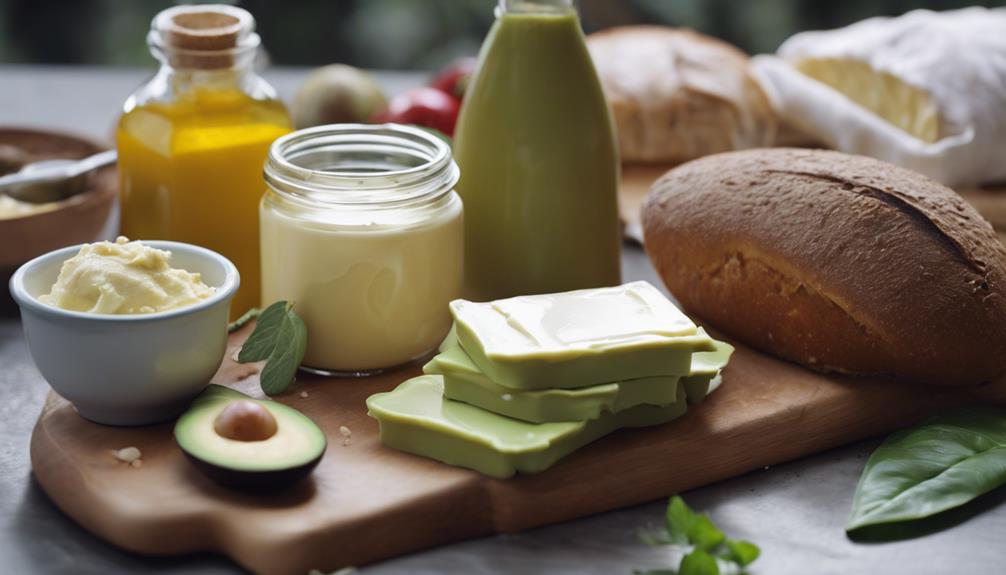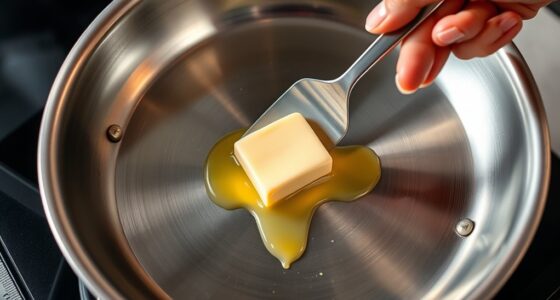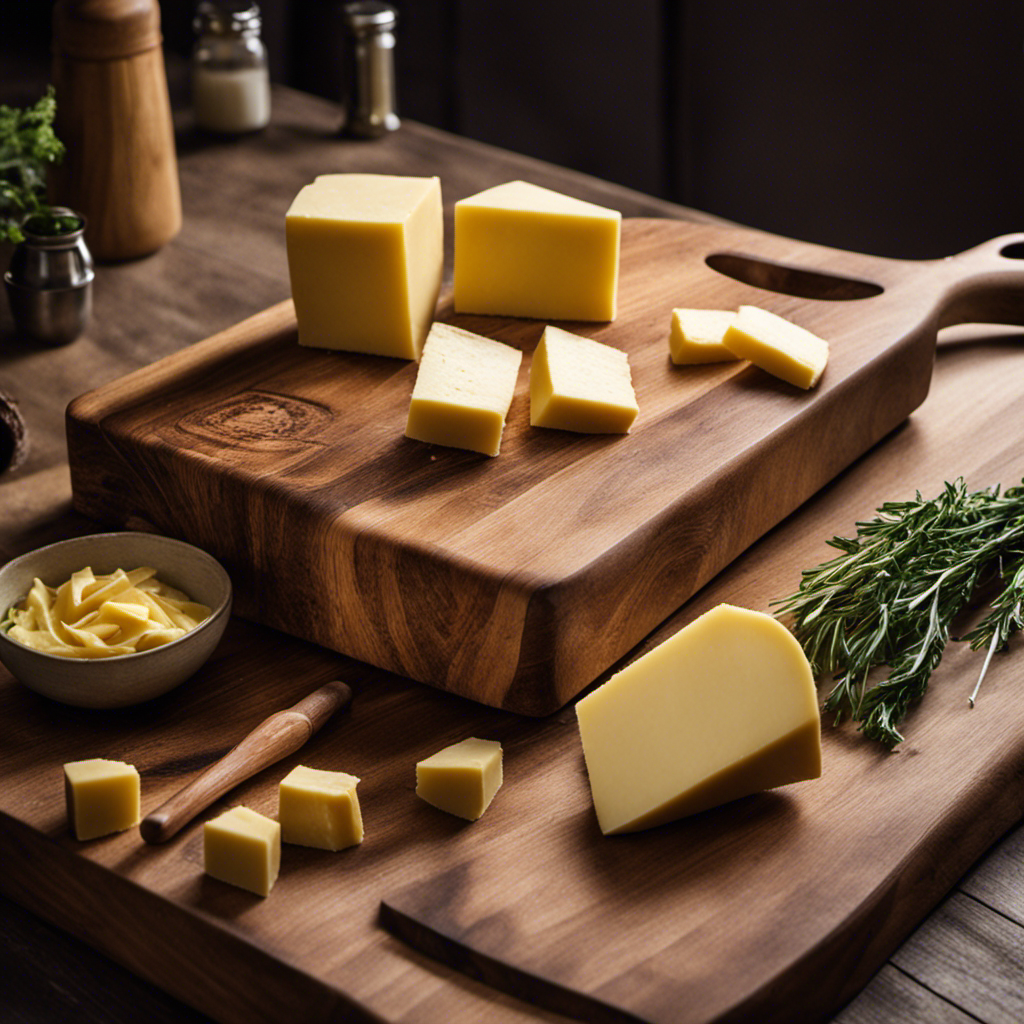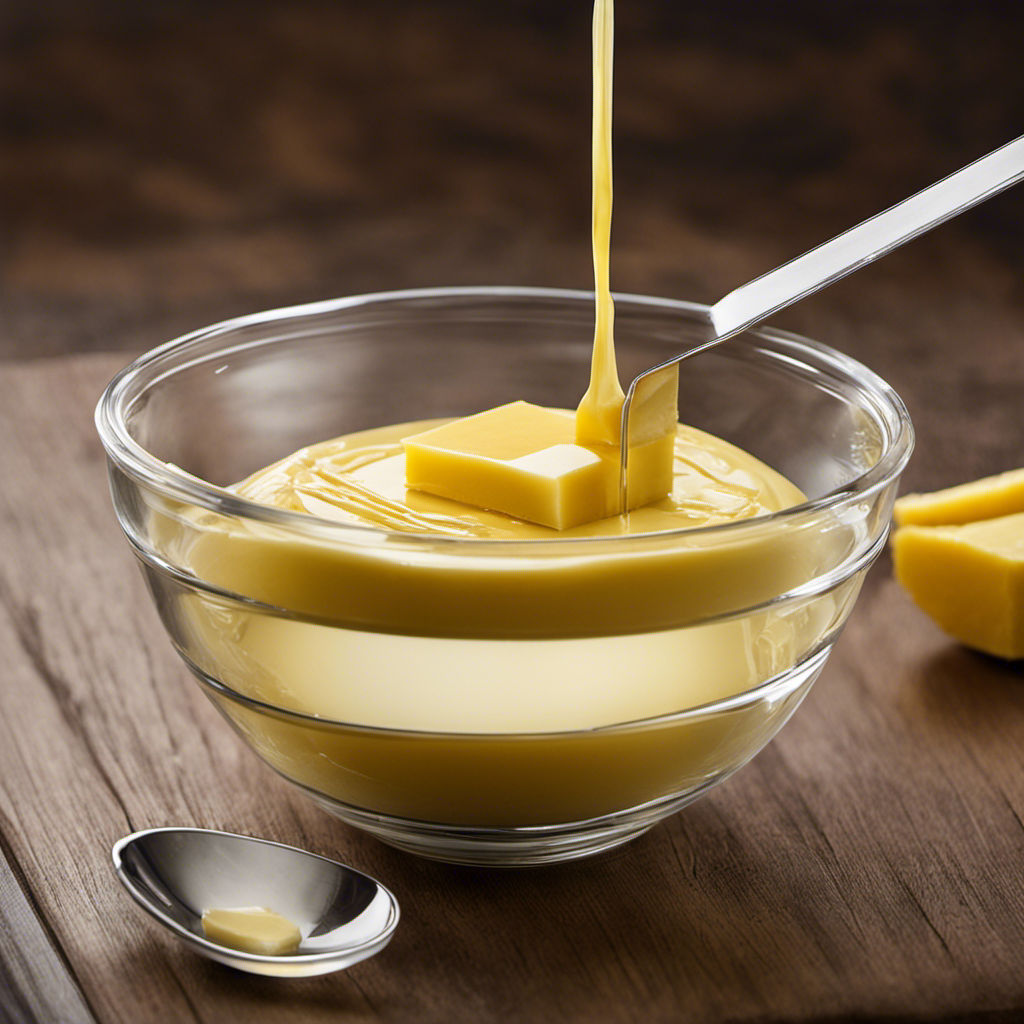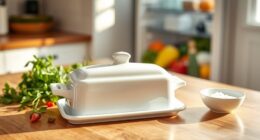To create laminated butter dough, start by mixing 4 cups of all-purpose flour with a pinch of salt. Gradually add 1 cup of ice-cold water until the dough forms. Chill this dough for at least 30 minutes. While it's chilling, prepare your cold, cubed unsalted butter by shaping it into a flat rectangle. Roll out the dough into a larger rectangle, place the butter in the center, and fold the dough over to encapsulate it. Use folding techniques like the envelope or book fold to create layers. Keeping everything cold is key, and there's more to master on this journey!
Key Takeaways
- Measure and mix dry ingredients accurately, then gradually add ice-cold water until the dough just comes together.
- Use cold butter to create a butter block and encapsulate it within the rolled-out dough.
- Perform folding techniques, like envelope or book folds, to create distinct layers for flakiness.
- Keep the dough chilled throughout the process to maintain the integrity of the butter layers.
- Preheat the oven and apply an egg wash before baking to achieve a golden finish.
Ingredients Needed
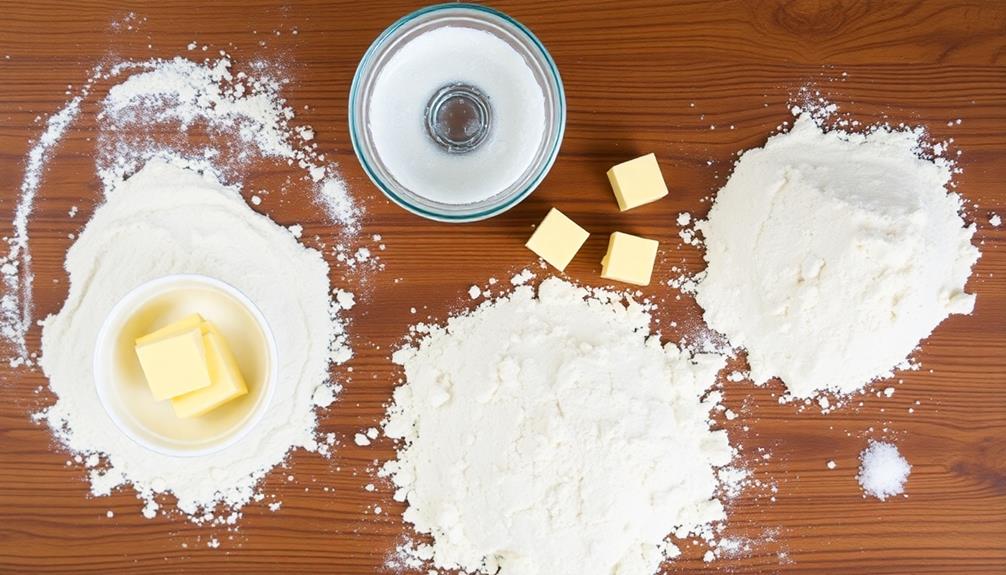
To create laminated butter dough, you'll need a few essential ingredients that work together to achieve that flaky, tender texture.
First, grab all-purpose flour; it provides the necessary structure. You'll want about four cups to start, ensuring your dough can hold its shape as you fold and roll.
Next, you'll need unsalted butter—typically a full pound. Cold butter is critical; it helps create those distinct layers, so don't soften it before use. Cut the butter into small cubes to make it easier to incorporate.
You'll also need water, around one cup, which should be ice-cold. This helps keep the dough chilled, promoting better layering during the lamination process. A pinch of salt is significant too, enhancing flavor and controlling gluten development.
Lastly, consider adding a little vinegar or lemon juice. This tiny bit of acid strengthens the dough, giving it a better texture.
Once you've gathered these ingredients, you're ready to prepare the dough. Each component plays a key role in achieving that perfectly flaky pastry, so don't skip or substitute any!
Enjoy the process as you begin creating your laminated butter dough masterpiece.
Preparing the Dough
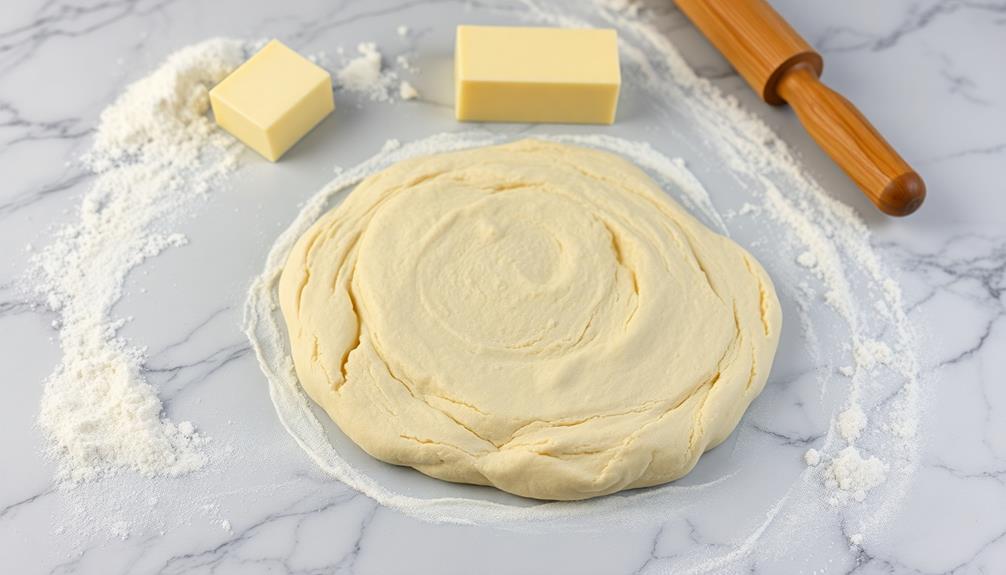
Creating laminated butter dough starts with properly mixing your ingredients. Begin by measuring your flour, salt, and sugar accurately. In a large mixing bowl, whisk these dry ingredients together until well combined. Next, add cold water gradually while mixing with a fork or your hands. You'll want to stop when the dough just comes together, so avoid overworking it. Wrap the dough in plastic wrap and chill it in the refrigerator for at least 30 minutes.
While your dough is chilling, prepare a clean workspace. This will help you roll out the dough evenly later. Once the resting period is over, take the dough out and gently flatten it into a rectangle. To keep things organized, refer to the table below for a quick guide on ingredient proportions and temperature:
| Ingredient | Amount | Temperature |
|---|---|---|
| All-purpose flour | 2 ½ cups | Cold |
| Salt | 1 tsp | N/A |
| Sugar | 1 tbsp | N/A |
| Water | ¾ cup | Cold |
Now you're ready to move on to the next step in creating your laminated butter dough!
Incorporating the Butter
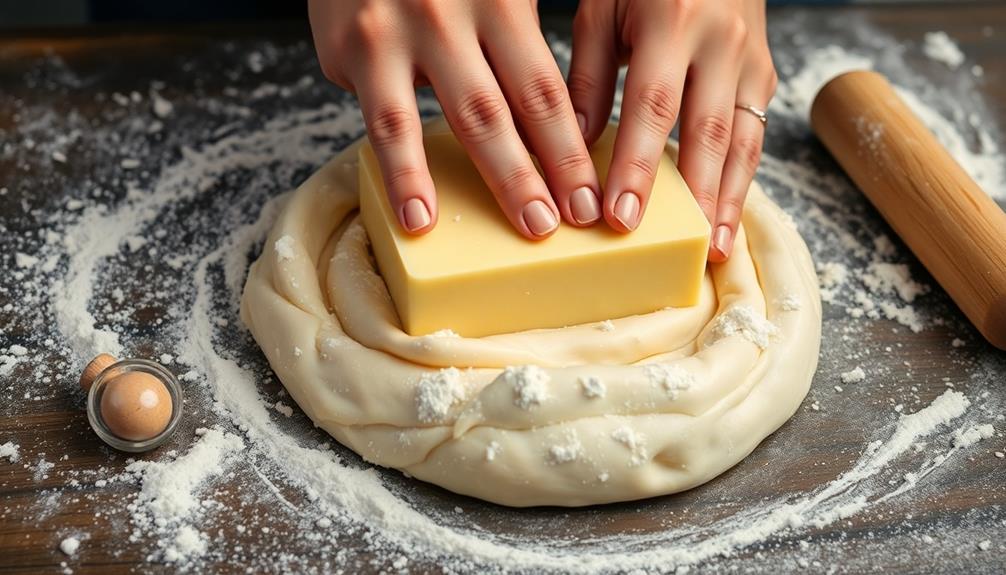
Incorporating the butter is an essential step in achieving that flaky, layered texture in your laminated dough. To do this effectively, you'll want to follow these straightforward guidelines:
- Use cold butter: Start with chilled butter, ideally around 50°F (10°C). This helps maintain its structure during the lamination process.
- Create a butter block: Shape the cold butter into a flat rectangle, about 1/2 inch thick. This uniformity guarantees even distribution throughout your dough.
- Roll your dough: After preparing your base dough, roll it out into a rectangle that's approximately twice the size of your butter block. This gives you enough space to encase the butter properly.
- Encase the butter: Place the butter block in the center of the rolled-out dough and fold the edges over it, sealing it completely. Make sure there are no gaps, as this can lead to butter leaking during the lamination process.
Folding Techniques
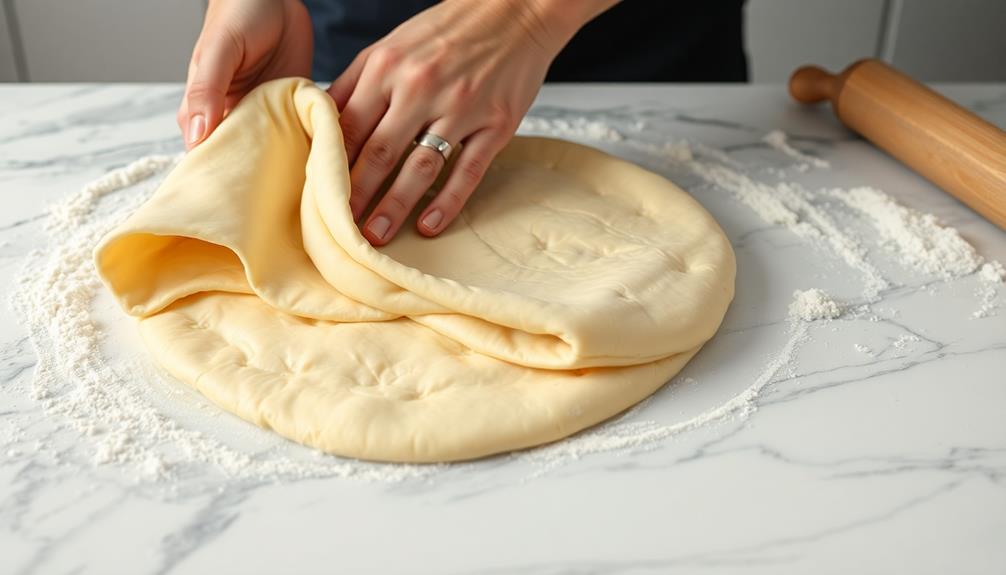
Mastering folding techniques is essential for achieving those beautiful layers in laminated butter dough. You'll want to focus on two main folds: the envelope and the book fold. These methods help you create that flaky, airy texture.
Start with the envelope fold. Roll out your dough into a rectangle, then fold the top and bottom edges toward the center, like closing an envelope. This technique creates many layers quickly. Next, try the book fold. Roll your dough into a rectangle again, but this time, fold one side over to the center and then the other side over the first. This method will give you even more layers.
To visualize these techniques, take a look at the following table:
| Folding Technique | Description |
|---|---|
| Envelope Fold | Fold top and bottom to center |
| Book Fold | Fold sides to the center |
| Layer Count | Increases with each fold |
Baking Tips
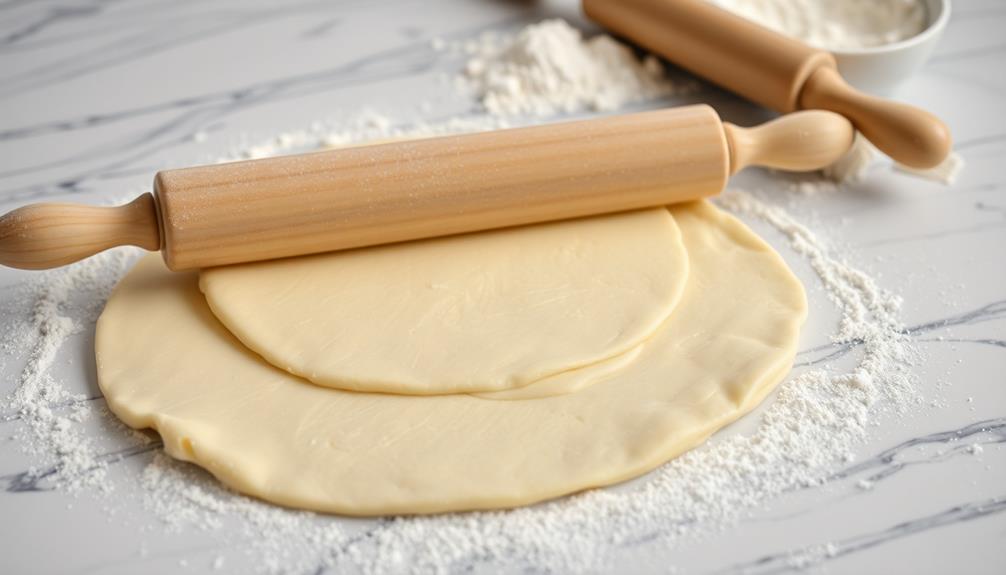
When it comes to baking laminated butter dough, a few key tips can make all the difference in achieving that perfect flaky texture. Follow these simple guidelines to guarantee your pastries turn out just right.
- Chill Your Dough: Keep your dough cold throughout the process. This helps maintain those distinct layers of butter, which create flakiness. If you notice your dough getting warm, pop it back in the fridge for a few minutes.
- Preheat Your Oven: Always preheat your oven to the right temperature before baking. A hot oven is essential for proper puffing and browning, so don't skip this step!
- Use Parchment Paper: Line your baking sheets with parchment paper. This prevents sticking and allows for even heat distribution, resulting in a beautifully baked pastry.
- Egg Wash: Brush your pastries with an egg wash before baking. This gives them a shiny, golden finish that's visually appealing and enhances flavor.
Frequently Asked Questions
Can I Use Margarine Instead of Butter for Laminated Dough?
You can use margarine instead of butter for laminated dough, but it won't yield the same flaky texture or rich flavor. Butter's fat content and water levels create better layers and taste in pastries.
How Do I Know if My Dough Is Overworked?
If you've ever ended up with tough cookies, you know overworking dough's a problem. You'll know your dough's overworked when it becomes sticky, loses elasticity, and feels dry instead of smooth and supple.
What Type of Flour Is Best for Laminated Dough?
For laminated dough, you'll want to use a high-protein flour, like bread flour. It gives your dough strength and elasticity, ensuring those perfect layers. All-purpose flour works too, but may yield slightly less flaky results.
How Long Can I Refrigerate Laminated Dough Before Using It?
You can refrigerate laminated dough for up to 2 days before using it. Just make sure to wrap it tightly to prevent drying out. If you need longer, consider freezing it for future use.
Can I Freeze Laminated Dough for Later Use?
Yes, you can freeze laminated dough for later use. Just wrap it tightly in plastic wrap and place it in an airtight container. When you're ready, thaw it in the fridge before rolling and baking.
Conclusion
Creating laminated butter dough is like mastering a delicate dance; each fold and turn builds harmony between layers of dough and butter. Just as a skilled dancer knows how to maintain rhythm and grace, you'll learn to balance patience and precision. With practice, you'll transform simple ingredients into flaky pastries that rise beautifully in the oven. So roll up your sleeves, embrace the process, and soon you'll be crafting delicious treats that impress everyone at the table.
